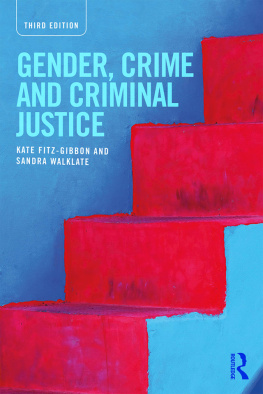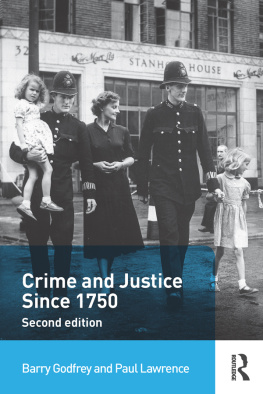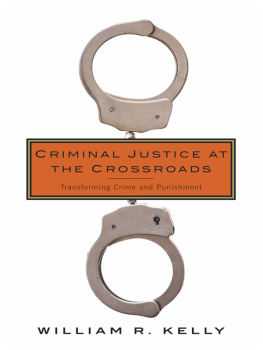Robert Heiner - Criminology in Brief: Understanding Crime and Criminal Justice
Here you can read online Robert Heiner - Criminology in Brief: Understanding Crime and Criminal Justice full text of the book (entire story) in english for free. Download pdf and epub, get meaning, cover and reviews about this ebook. year: 2020, publisher: Routledge, genre: Children. Description of the work, (preface) as well as reviews are available. Best literature library LitArk.com created for fans of good reading and offers a wide selection of genres:
Romance novel
Science fiction
Adventure
Detective
Science
History
Home and family
Prose
Art
Politics
Computer
Non-fiction
Religion
Business
Children
Humor
Choose a favorite category and find really read worthwhile books. Enjoy immersion in the world of imagination, feel the emotions of the characters or learn something new for yourself, make an fascinating discovery.

- Book:Criminology in Brief: Understanding Crime and Criminal Justice
- Author:
- Publisher:Routledge
- Genre:
- Year:2020
- Rating:5 / 5
- Favourites:Add to favourites
- Your mark:
Criminology in Brief: Understanding Crime and Criminal Justice: summary, description and annotation
We offer to read an annotation, description, summary or preface (depends on what the author of the book "Criminology in Brief: Understanding Crime and Criminal Justice" wrote himself). If you haven't found the necessary information about the book — write in the comments, we will try to find it.
This book offers a short and accessible introduction to criminology. Written in a clear and direct style, criminological theories are made more accessible for undergraduates, and the workings of the criminal justice system are explained. Students will learn not only how the criminal justice system works, but also how it does not work. Beyond introducing students to the basics, the book provides a persuasive argument that the criminal justice system we have in the United States comes nowhere close to our ideals for justice, doing little good in terms of crime control, while doing great harm to minorities and the poor.
Engaging and far-ranging, this text offers a condensed approach to the key themes and debates surrounding crime and justice, and covers definitions and measurements of crime, criminological theories, crime typologies, and contemporary issues in the criminal justice system. It includes chapters on:
- Criminological Methods and Data
- Biological, Psychological, and Classical Theories of Crime
- Sociological Theories of Crime
- Patterns of Crime
- The Police
- The Courts
- Corrections and the American Prison System
Written by an experienced textbook author, this book offers a critical approach to the subjects discussed and draws on topical examples such as Black Lives Matter, the militarization of the police, plea bargaining and the War on Drugs. It is essential reading for Criminology courses within a Sociology Major and will also be of interest to Criminal Justice majors, law students, policymakers, and informed citizens.
Robert Heiner: author's other books
Who wrote Criminology in Brief: Understanding Crime and Criminal Justice? Find out the surname, the name of the author of the book and a list of all author's works by series.






